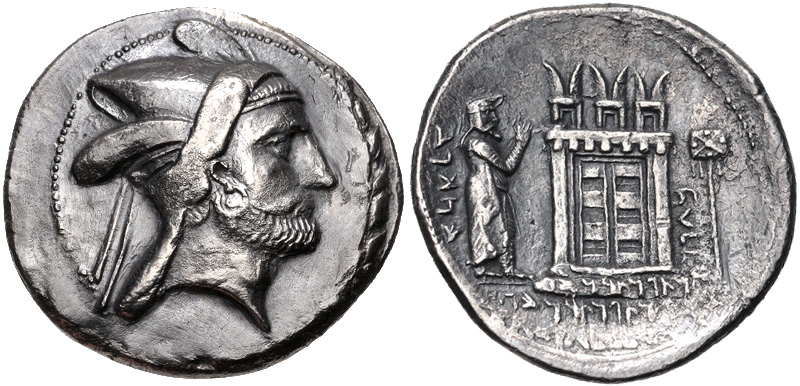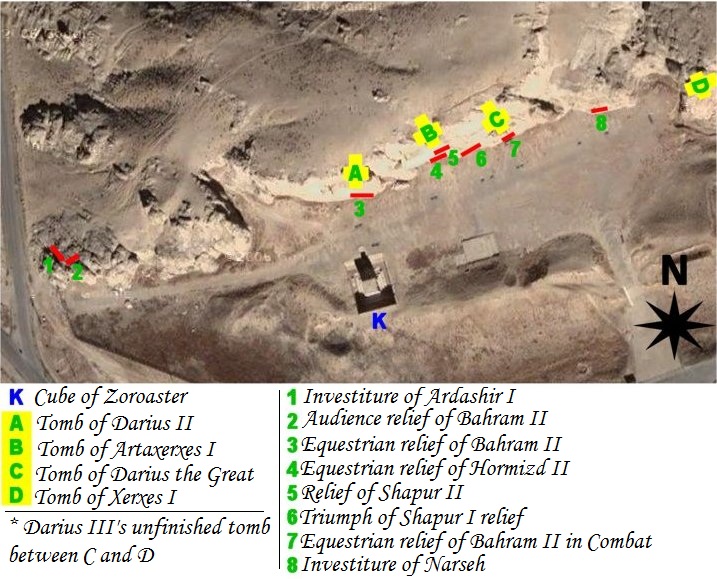|
Marvdasht
Marvdasht ( fa, مرودشت, also romanized as Marv Dasht) is a city and the capital of Marvdasht County, Fars Province, Iran. At the 2006 census, its population was 123,858, in 29,134 families. Name Some historians hold that Marvdasht was originally the name of one of the neighborhoods of the ancient city of Estakhr, until gradually the whole area was called Marvdasht. Others have argued that ''marv'' was the name of a plant which grew in the area and the suffix ''dasht'' (meaning plain in the Persian language) was added to form a descriptive placename. History Marvdasht is as ancient as the history of Iran and the Persian Empire. Its former capital Persepolis is in the vicinity of the city, and few kilometers farther Naqsh-e-Rostam, Naqsh-e Rajab and the ruins of the ancient city of Estakhr are reminiscent of the region's importance in historic times. Archaeological excavations have shown that civilized people had already been living in the Marvdasht Plains for millennia ... [...More Info...] [...Related Items...] OR: [Wikipedia] [Google] [Baidu] |
Marvdasht County
Marvdasht County ( fa, شهرستان مرودشت) is in Fars province, Iran. The capital of the county is the city of Marvdasht Marvdasht ( fa, مرودشت, also romanized as Marv Dasht) is a city and the capital of Marvdasht County, Fars Province, Iran. At the 2006 census, its population was 123,858, in 29,134 families. Name Some historians hold that Marvdasht was o .... At the 2006 census, the county's population was 294,621 in 69,244 households. The following census in 2011 counted 307,492 people in 83,641 households. At the 2016 census, the county's population was 323,434 in 94,699 households. Administrative divisions The population history and structural changes of Marvdasht County's administrative divisions over three consecutive censuses are shown in the following table. The latest census shows five districts, 15 rural districts, and five cities. References Counties of Fars Province {{Fars-geo-stub ... [...More Info...] [...Related Items...] OR: [Wikipedia] [Google] [Baidu] |
Central District (Marvdasht County)
The Central District of Marvdasht County ( fa, بخش مرکزی شهرستان مرودشت) is a district (bakhsh) in Marvdasht County, Fars Province, Iran. At the 2006 census, its population was 195,450, in 46,300 families. The District has one city: Marvdasht. The District has six rural district Rural districts were a type of local government area – now superseded – established at the end of the 19th century in England, Wales, and Ireland for the administration of predominantly rural areas at a level lower than that of the Ad ...s (''dehestan''): Kenareh Rural District, Majdabad Rural District, Mohammadabad Rural District, Naqsh-e Rostam Rural District, Ramjerd-e Yek Rural District, and Rudbal Rural District. References Marvdasht County Districts of Fars Province {{Marvdasht-geo-stub ... [...More Info...] [...Related Items...] OR: [Wikipedia] [Google] [Baidu] |
Naqsh-e Rajab
Naqsh-e Rajab ( fa, نقش رجب, ) is an archaeological site just west of Istakhr and about 5 km north of Persepolis in Fars Province, Iran. Together with Naqsh-e Rustam, which lies 2.5 km away, the site is part of the Marvdasht cultural complex. Together, the two sites are a tentative candidate for UNESCO World Heritage status. Naqsh-e Rajab is the site of four limestone rockface inscriptions and rock-cut bas-reliefs that date to the early Sassanid era. One of the carvings is the investiture inscription of Ardeshir I (ruled in 226-241 CE), the founder of the dynasty. The second investiture inscription is Ardeshir's successor, Shapur I (241-272 CE). A third bas-relief, known as 'Shapur's Parade' celebrates the king's military victory in 244 over the Roman emperor Philip the Arab. A fourth bas-relief and inscription is attributed to Kartir, high priest under Shapur I and his sons Hormizd I (272-273 CE) and Bahram I (273–276 CE). See also * List of colossal scu ... [...More Info...] [...Related Items...] OR: [Wikipedia] [Google] [Baidu] |
Estakhr
Istakhr (Middle Persian romanized: ''Stakhr'', fa, اصطخر, translit=Istakhr also spelt استخر in modern literature) was an ancient city in Fars province, north of Persepolis in southwestern Iran. It flourished as the capital of the Persian ''Frataraka'' governors and Kings of Persis from the third century BC to the early 3rd century AD. It reached its apex under the Sasanian Empire (224-651 AD), and was the hometown of the Sasanian dynasty. Istakhr briefly served as the first capital of the Sasanian Empire from 224 to 226 AD and then as principal city, region, and religious centre of the Sasanian province of Pars. During the Arab conquest of Iran, Istakhr was noted for its stiff resistance, which resulted in the death of many of its inhabitants. Istakhr remained a stronghold of Zoroastrianism long after the conquests, and remained relatively important in the early Islamic era. It went into gradual decline after the founding of nearby Shiraz, before being destroyed and ab ... [...More Info...] [...Related Items...] OR: [Wikipedia] [Google] [Baidu] |
Counties Of Iran
Iran's counties (''shahrestan'', fa, شهرستان, also romanized as ''šahrestân'') are administrative divisions of larger provinces (''ostan''). The word ''shahrestan'' comes from the Persian words ' ("city, town") and ' ("province, state"). "County," therefore, is a near equivalent to ''shahrestan''. Counties are divided into one or more districts ( ). A typical district includes both cities ( ) and rural districts ( ), which are groupings of adjacent villages. One city within the county serves as the capital of that county, generally in its Central District. Each county is governed by an office known as ''farmândâri'', which coordinates different public events and agencies and is headed by a ''farmândâr'', the governor of the county and the highest-ranking official in the division. Among the provinces of Iran, Fars has the highest number of ''shahrestans'' (37), while Qom has the fewest (3). In 2005 Iran had 324 ''shahrestans'', while in 2021 there were 467. ... [...More Info...] [...Related Items...] OR: [Wikipedia] [Google] [Baidu] |
Persepolis
, native_name_lang = , alternate_name = , image = Gate of All Nations, Persepolis.jpg , image_size = , alt = , caption = Ruins of the Gate of All Nations, Persepolis. , map = , map_type = Iran#West Asia , map_alt = , map_caption = , map_size = , altitude_m = , altitude_ref = , relief = yes , coordinates = , map_dot_label = , location = Marvdasht, Fars Province, Iran , region = , type = Settlement , part_of = , length = , width = , area = , volume = , diameter = , circumference = , height = , builder = , and , material = Limestone, mud-brick, cedar wood , built = 6th century BC , abandoned = , epochs = Achaemenid Empire , cultures = Persian , dependency_of = , occupants = , event = * Battle of the Pe ... [...More Info...] [...Related Items...] OR: [Wikipedia] [Google] [Baidu] |
Naqsh-e-Rostam
Naqsh-e Rostam ( lit. mural of Rostam, fa, نقش رستم ) is an ancient archeological site and necropolis located about 12 km northwest of Persepolis, in Fars Province, Iran. A collection of ancient Iranian rock reliefs are cut into the face of the mountain and the mountain contains the final resting place of four Achaemenid kings, notably king Darius the Great and his son, Xerxes. This site is of great significance to the history of Iran and to Iranians, as it contains various archeological sites carved into the rock wall through time for more than a millennium from the Elamites and Achaemenids to Sassanians. It lies a few hundred meters from Naqsh-e Rajab, with a further four Sassanid rock reliefs, three celebrating kings and one a high priest. Naqsh-e Rostam is the necropolis of the Achaemenid dynasty ( 550–330 BC), with four large tombs cut high into the cliff face. These have mainly architectural decoration, but the facades include large panels over the doo ... [...More Info...] [...Related Items...] OR: [Wikipedia] [Google] [Baidu] |
Persian Empire
The Achaemenid Empire or Achaemenian Empire (; peo, wikt:𐎧𐏁𐏂𐎶, 𐎧𐏁𐏂, , ), also called the First Persian Empire, was an History of Iran#Classical antiquity, ancient Iranian empire founded by Cyrus the Great in 550 BC. Based in Western Asia, it was contemporarily the List of largest empires, largest empire in history, spanning a total of from the Balkans and ancient Egypt, Egypt in the west to Central Asia and the Indus River, Indus Valley in the east. Around the 7th century BC, the region of Persis in the southwestern portion of the Iranian plateau was settled by the Persians. From Persis, Cyrus rose and defeated the Medes, Median Empire as well as Lydia and the Neo-Babylonian Empire, marking the formal establishment of a new imperial polity under the Achaemenid dynasty. In the modern era, the Achaemenid Empire has been recognized for its imposition of a successful model of centralized, bureaucratic administration; its multicultural policy; building comp ... [...More Info...] [...Related Items...] OR: [Wikipedia] [Google] [Baidu] |
Bakhsh
A ( fa, بخش, also romanized as ) is a third-level administrative division of Iran. While sometimes translated as "county," it is more accurately translated as "district," similar to a township in the United States or a district of England. In Iran, the provinces (first-level divisions) (استان, ''ostān'') consist of several counties (second-level divisions) (شهرستان, ''shahrestān''), and the counties consist of one or more districts (third-level divisions) (بخش, ''bakhsh''). A district consists of a combination of cities (شهر ''shahr'') and rural districts (دهستان, ''dehestān'') (fourth-level divisions). The official governor of a district is called a ''bakhshdar'', the head of the ''bakhshdari'' office. Rural districts are a collection of villages and their surrounding lands. One of the cities of the county is named its capital. To better understand such subdivisions, the following table may be helpful. Below is the 2006 structure of Khash ... [...More Info...] [...Related Items...] OR: [Wikipedia] [Google] [Baidu] |
Islamic Revolution
The Iranian Revolution ( fa, انقلاب ایران, Enqelâb-e Irân, ), also known as the Islamic Revolution ( fa, انقلاب اسلامی, Enqelâb-e Eslâmī), was a series of events that culminated in the overthrow of the Pahlavi dynasty under Shah Mohammad Reza Pahlavi, and the replacement of his government with an Islamic republic under the rule of Ayatollah Ruhollah Khomeini, a leader of one of the factions in the revolt. The revolution was supported by various leftist and Islamist organizations. After the 1953 Iranian coup d'état, Pahlavi had aligned with the United States and the Western Bloc to rule more firmly as an authoritarian monarch. He relied heavily on support from the United States to hold on to power which he held for a further 26 years. This led to the 1963 White Revolution and the arrest and exile of Ayatollah Khomeini in 1964. Amidst massive tensions between Khomeini and the Shah, demonstrations began in October 1977, developing into a campaign ... [...More Info...] [...Related Items...] OR: [Wikipedia] [Google] [Baidu] |
Chalcolithic
The Copper Age, also called the Chalcolithic (; from grc-gre, χαλκός ''khalkós'', "copper" and ''líthos'', "stone") or (A)eneolithic (from Latin '' aeneus'' "of copper"), is an archaeological period characterized by regular human manipulation of copper, but prior to the discovery of bronze alloys. Modern researchers consider the period as a subset of the broader Neolithic, but earlier scholars defined it as a transitional period between the Neolithic and the Bronze Age. The archaeological site of Belovode, on Rudnik mountain in Serbia, has the world's oldest securely dated evidence of copper smelting at high temperature, from (7000 BP). The transition from Copper Age to Bronze Age in Europe occurred between the late 5th and the late In the Ancient Near East the Copper Age covered about the same period, beginning in the late and lasting for about a millennium before it gave rise to the Early Bronze Age. Terminology The multiple names result from m ... [...More Info...] [...Related Items...] OR: [Wikipedia] [Google] [Baidu] |





